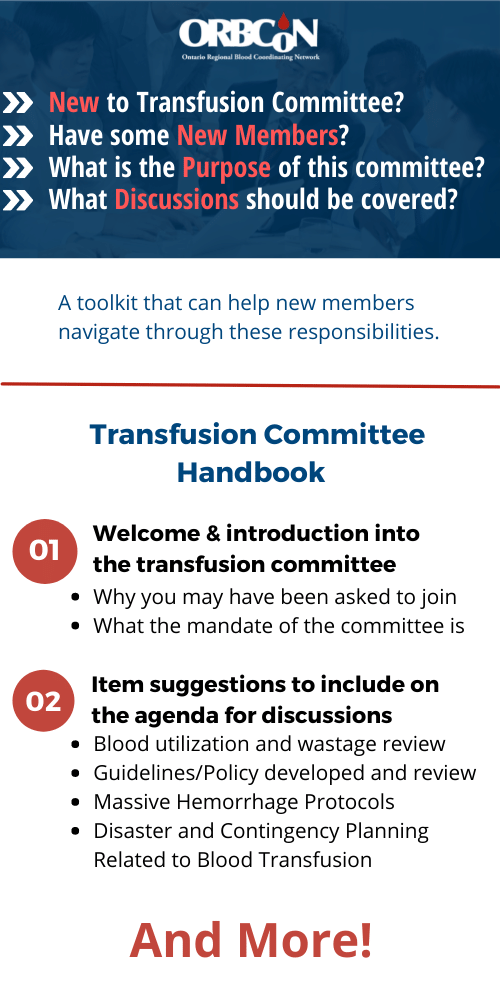Patient Engagement in the CONCOR-1 Trial: Formation and Involvement of the Community Advisory Committee
Emily Sirotich BSc, PhD candidate, McMaster Centre for Transfusion Research.
Patient and public engagement in research is a growing movement to involve diverse stakeholders who bring relevant knowledge and experience to a research team. Partnerships between stakeholders are strengthened by joint development of the research design, implementation, analysis, and dissemination of results. Studies that engage stakeholders will improve generalizability, increase uptake of research findings, and integrate knowledge translation strategies; resulting in high quality research, informed by stakeholders that is more likely to be embraced by the community.
During the initial stages of the CONvalescent Plasma for Hospitalized Adults With COVID-19 Respiratory Illness (CONCOR-1) trial design, the Steering Committee recommended collaboration with community members to ensure the inclusion of diverse perspectives and lived experiences throughout the trial. It was especially important to engage with members from marginalized groups or populations who are underrepresented in research, as well as those most affected by COVID-19, to help advocate for their access to recruitment and results of the trial. The Community Advisory Committee (CAC) of the CONCOR-1 trial was formed prior to recruitment to engage with key stakeholders throughout the trial.
Trial investigators and CAC members collaborated to identify aspects of the clinical trial where community input would be beneficial. These areas included the: CONCOR-1 website, patient recruitment information and strategies, the patient consent process, plasma collection and distribution, challenges at the hospital level, public communication and knowledge translation strategies, as well as the final analyses. Throughout the CONCOR-1 trial, CAC members attended virtual, monthly meetings where study updates were provided, and CAC member input was sought into various aspects of the trial. Investigators recognized the importance of incorporating diverse perspectives and provided CAC members with the knowledge needed to understand the trial through educational sessions about COVID-19 antibodies, data safety monitoring and how to interpret study results.
The many available resources on patient and public engagement can help guide the process. However, the method of applying patient and public engagement strategies is unique to each research team and study. My experience joining the CAC team within the CONCOR-1 trial exemplified the benefits and importance of engaging with community members with diverse perspectives and lived experiences, especially through formal clinical trial study advisory groups. This learning experience highlighted that research will continue to improve when we invite more voices to the table.
Featured Resource: Transfusion Handbook Committee


University of Toronto Transfusion Medicine Rounds
December 16th, 2021 @ 12:00 pm – 1:00 pm
MLT Session: Challenging Serology Cases, presented by Ms. Minda Agpalo, Dr. Waseem Anani, Dr. Celina Montemayor
